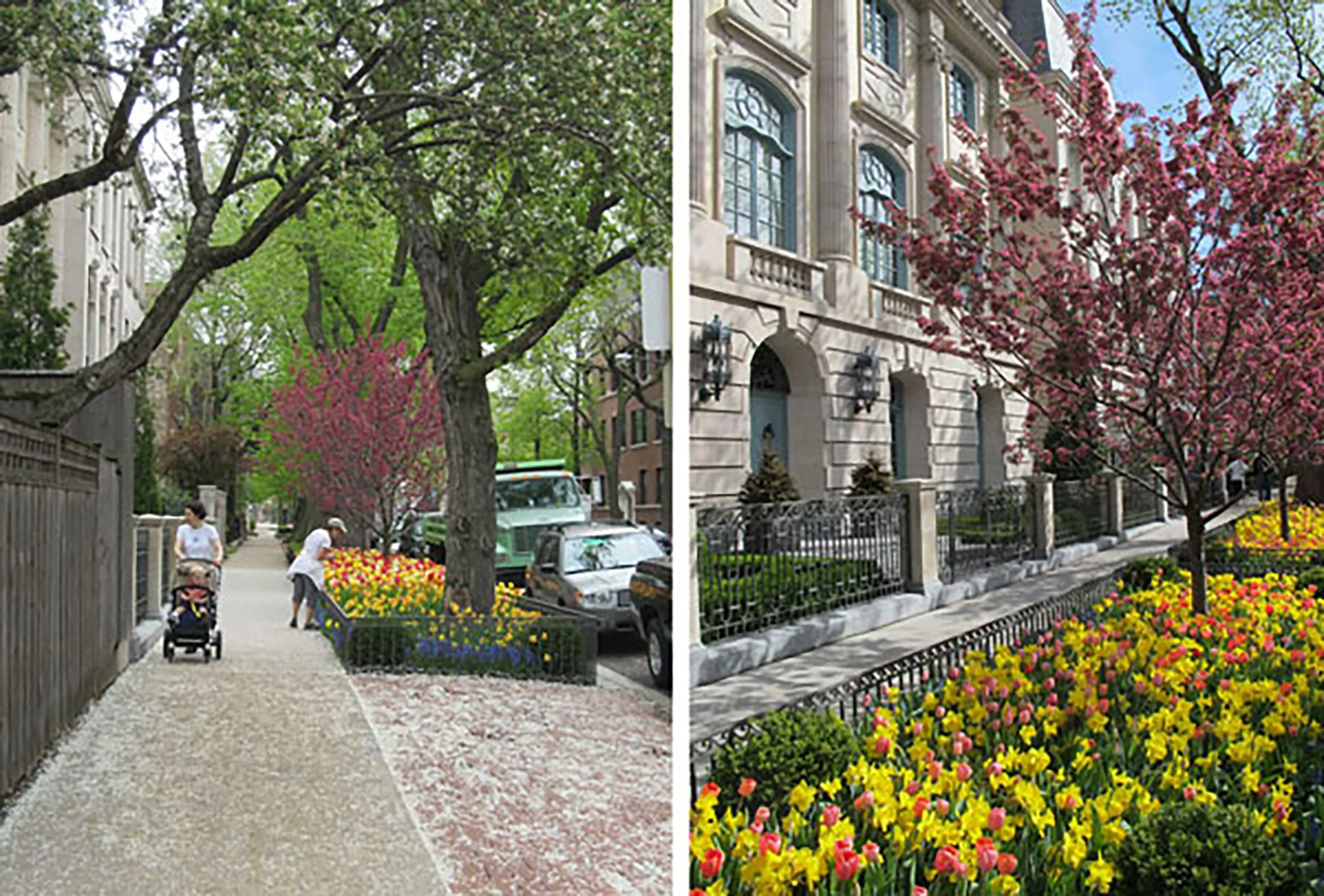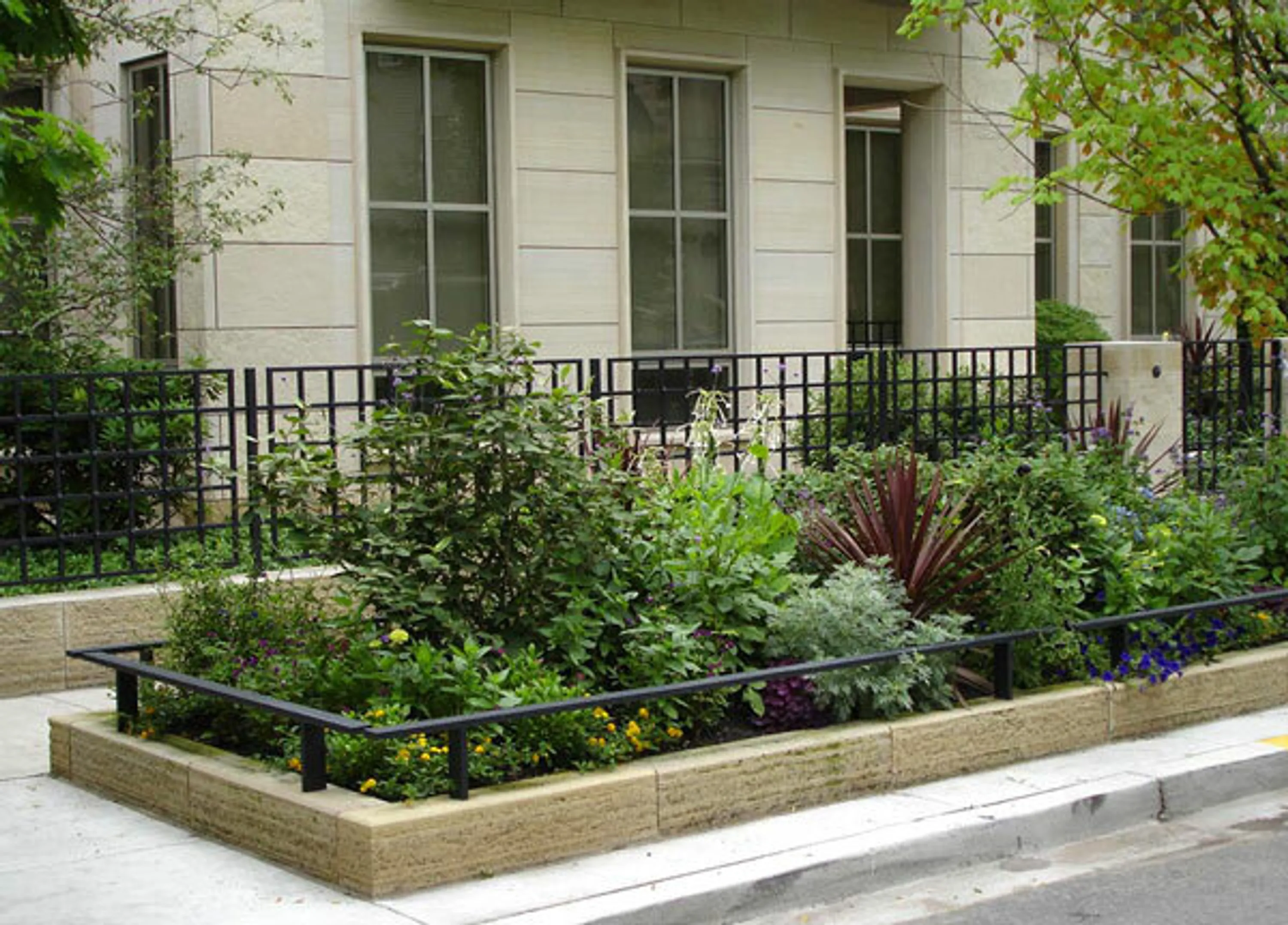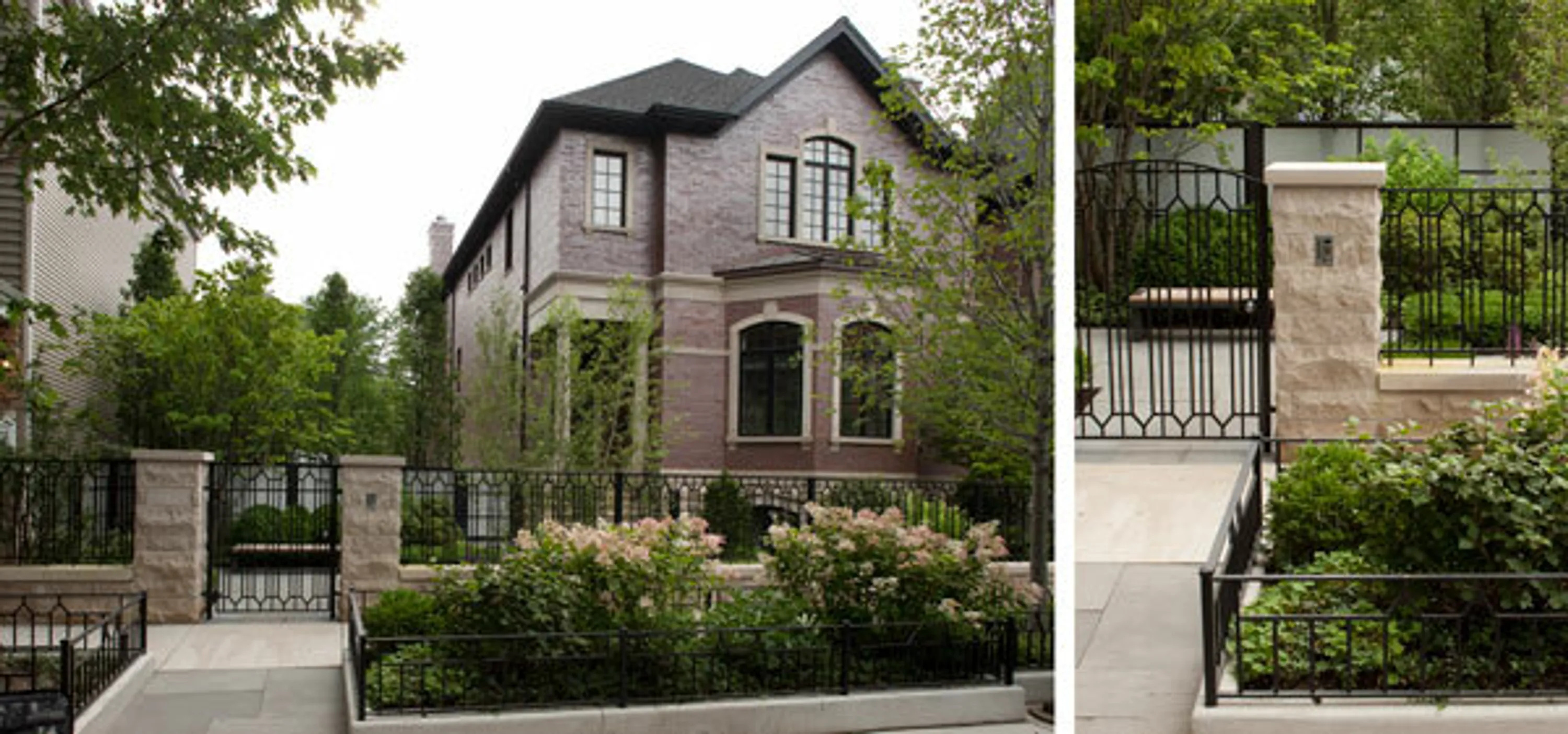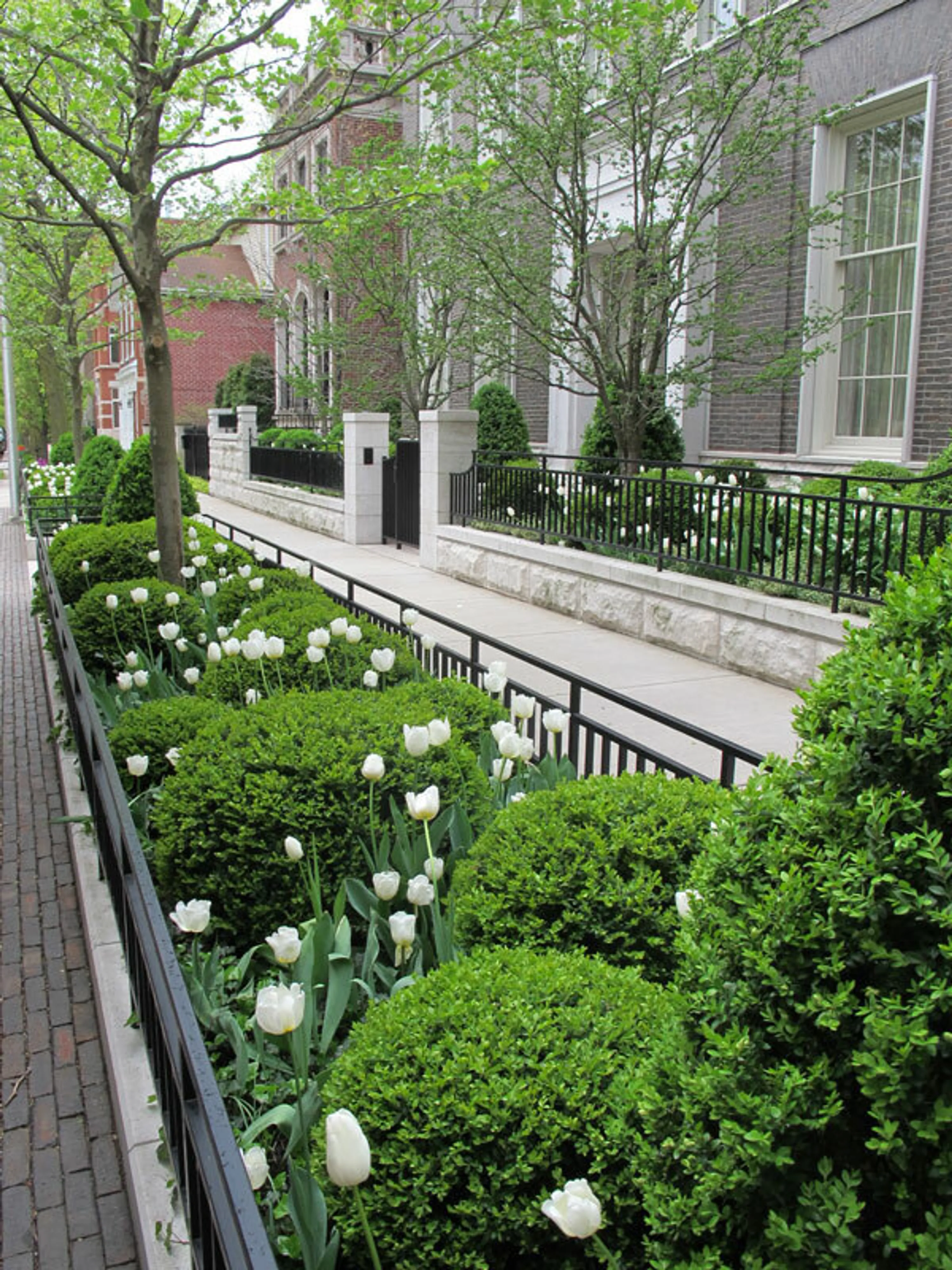There are practical considerations, though, and this summer we had a question from a blog reader about her struggles with summer blooming plants in her parkway. In response, here are four tips for parkway plantings from our horticulture gurus, John Evans and Steve Gierke:
- Successful parkway planters need a raised curb or at minimum, a rail, to keep people and dogs out. Blooming plants won’t thrive if they are getting stepped on or ‘dog-watered’ (as my 5-year-old puts it).
- Annuals require irrigation or daily watering.
- Shade can be a huge issue in parkways. Though boxwood and ferns will do fine with low light, plants like Geranium and Hydrangeas need lots of sun to flower significantly. If it is very shady, consider a canopy reduction of up to 15% to allow in more light. Also, consider plants which perform very well in low light, Begonia, Impatiens, Euphorbia ‘Diamond Frost’. And, as most annuals prefer full sun consider using foliage plants like Perilla and Coleus to brighten up the space.
- Moisture and soil fertility: These are also challenging variables. The trees in parkways are starved for both moisture and nutrients due to the trees roots that exist within the space. Try incorporating 1” pine bark fines and 1” of garden compost into the soil. Regular watering is also a must and if that watering can be done along with a water soluble fertilizer 1x/week all the better. Both Miracle Gro and Peters Blossom Booster are great products.
Here are some of my favorite examples of how a well-designed parkway unifies home, garden and street by repeating the materials, scale and patterns used in their neighboring gardens.







